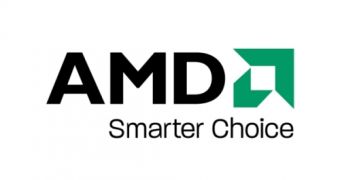Advanced Micro Devices seems to have plans of getting its premium class FX-series processors back on the market. Voices from AMD say that the Phenom FX central processing units (CPUs) should be released in mid-2009, and that they will come on the new AM3 socket platform. The company already announced the AM3 processors as compatible with AM2 sockets, but not the other way around. The new chips are designed for the high-end market, and they are expected to reach the same performance level as the competition in order to make a stand.
The specifications of the new processors are not well known, but it seems that they are based on the Deneb FX core. The chips will feature four processing engines, shared level-three cache, dual-channel DDR2 (up to PC2-8500, 1066MHz) and DDR3 (up to PC3-10666, 1333MHz) memory controller. AMD's specifications on its first 45nm microprocessors for desktops showed plans for 2.80GHz and 3.0GHz chips, meaning that the FX CPUs are expected to come with higher clock-speeds and leveraged performance, not to mention the flexibility the AM3 socket promises.
AMD is reviving its FX-branding after six years since the initial launch. Back in 2003, the company released the Athlon 64 FX processors to address computer enthusiasts and gamers, offering unlocked multipliers and the highest clockings the company had in store. The Athlon FX processors ruled the x86 chip market until 2006, when they lost ground to Intel's products. AMD released no other FX processors during 2007 and 2008, but it should have them back on the market by the second half of next year.
The Sunnyvale company focused on mid- and entry-level products during the past two years, but still offered processors that featured unlocked multipliers with its Black Edition line-up of Athlon and Phenom chips, which had a fair price and included good overclocking features for those still loyal to AMD. Intel has similar products on the market – the Extreme Edition processors that feature high clock rates and unlocked multipliers – while prices are similar to AMD's CPUs. The upcoming Phenom FX processors are expected to offer clock-speeds higher than their future mainstream series, probably jumping over the 3.0GHz mark.
Increased frequencies are important for the Deneb FX chips as they need to catch the consumer’s eye. Performance enthusiasts should be able to purchase CPUs priced at $1000 if they are able to provide unparalleled performance levels.
Other news reports on AMD say that, besides the Deneb CPUs that address the high-end and premium class market, the company wants to expand its processor family with the codenamed Propus, Heka, Rana and Regor, which are designed for mainstream and entry-level devices. An important fact is that all the new processors will feature two or more cores, and they are all meant for the AM3 platforms, which means that they will come with great advantages over the previous chip families, including the 45nm fabrication process and micro-architectural improvements.
Propus is said to be a quad-core processor with dual-channel DDR2/DDR3 memory controller, but without L3 cache, Heka should come as a triple-core chip with shared L3 cache and DDR2/DDR3 memory support, Rana is also a triple-core CPU with DDR2/DDR3 memory controller and no L3 cache, while Regor is a dual-core chip with 1MB L2 cache and DDR2/DDR3 support.
AMD will still offer the AM2+ microprocessors for the entry-level market segment in 2009, but it should put an end to the single core chips by the end of next year. The profit margins from CPU selling were quite low for the company in the past two years, but that should change if it manages to increase the number of its triple and quad core offerings. Thus, the Sunnyvale chip manufacturer is focused on ramping up the 45nm process technology as soon as possible.

 14 DAY TRIAL //
14 DAY TRIAL //